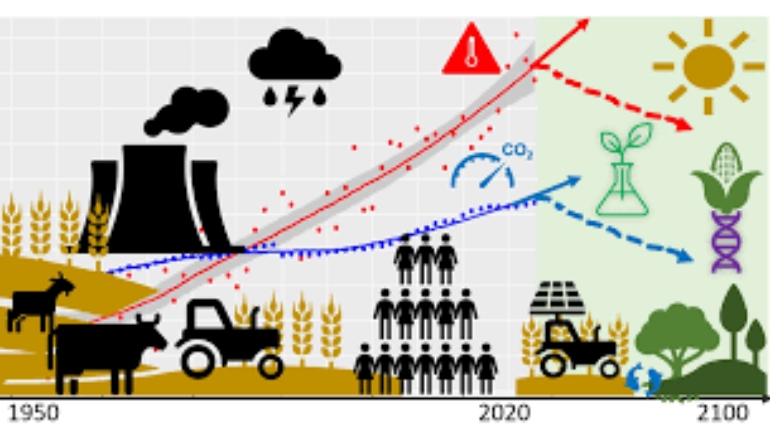Globally, the distinction between the human habitat and that of the wild animals is gradually diminishing. The spasm between man and biodiversity is getting wider.
In urban centres and semi-urban areas, Maharashtra has experienced a surge in man-animal conflicts, with increasing human casualties, particularly leopard attacks. In 2022, tigers killed 77 people and leopards snuffed out 17, with fatalities in Nashik, Chandrapur, Nagpur, Kolhapur, and Thane.
Sightings of wild animals on the outskirts of forests or human colonies (now encroached on what was originally forest land) are common. Closer home in Mumbai, leopards stray out of the Sanjay Gandhi National Park into tribal colonies or the newly constructed housing societies in search of food and water. Monkeys too make their presence felt carelessly barging from windows onto unsuspecting people at home.
Rapidly increasing human population, per capita consumption, and changing consumption patterns drive increased use of natural resources for agriculture, mining, industrial infrastructure, and urban areas.
It looks like the animals are uniting against us—the human species to protect what is rightfully theirs—the forest. The SNGP example is one among the many where we have played a vitriolic part. Not only have we displaced the animals from their natural habitat, but we are in the process of disarming the entire food system and thereby, impacting biodiversity.
How are we destroying biodiversity?
According to WHO, land use change, pollution, poor water quality, chemical and waste contamination, climate change, and other causes of ecosystem degradation contribute to biodiversity loss and, can pose considerable threats to human health.
The main direct cause of biodiversity loss is land use change (primarily for large-scale food production) which drives an estimated 30% of biodiversity decline globally. Second is overexploitation (overfishing, overhunting, and overharvesting) for things like food, medicines, and timber which drives around 20%. Climate change is the third most significant direct driver of biodiversity loss, which together with pollution accounts for 14%. Invasive alien species account for 11%, a Royal Society report states.
Biodiversity loss and impact:
| Reason | Impact |
| Deforestation | Biodiversity rich tropical rainforests being destroyed |
| Increased use of pesticide and fertilizer overuse | Pollution |
| Agriculture | Habitat loss, risk to local species |
| Low water in catchment areas reduced | d dams and irrigation water flows |
| Wildlife trade and fishing hunting | g and over-exploitation of species trade trade |
| e and travel spread | d of invasive species and diseases |
*** Source: The Royal Society
The agriculture-biodiversity climate change:
Authors of a ResearchGate research report note that due to climate change, distributions of species have shifted to higher elevations at a median rate of 11.0 m and 16.9 km per decade to higher latitudes. Accordingly, extinction rates of 1103 species under migration scenarios, provide 21–23% with unlimited migration and 38–52% with no migration.
Rising temperatures increase species extinction risk, causing irreversible loss of marine and coastal ecosystems, including coral reefs, which have nearly halved in 150 years a UN report notes.
Alarm bells:
The alarm bells are ringing.
Melting glaciers, heatwaves, extreme cold waves, torrential rain, and avalanches have impacted biodiversity equally or worse than human beings.
Take, for example, the videos of animal carcasses and plants floating on dirty water. Little wonder that global warming and changing rainfall patterns alter species ranges and the underlying water and chemical cycles that define current ecosystems.
Additionally, all activities within a food system –production, processing, retail, or cooking – have impacts on the environment. For example, land under agriculture is disturbed from its natural state, which affects soils, water, biodiversity, and even local microclimates.
Call for action:
Agriculture and biodiversity interact, benefiting each other through increased pollinators, pest reduction, and improved soil quality. Land conservation practices protect habitats, plants, and animals, while sustainable agriculture practices reduce erosion and promote nutrient retention.
Nature conservationists, Agtechs, policymakers, the government, the UN, WB, WHO, and other stakeholders are penning advocacies or initiating primary action to limit biodiversity loss.
The UN Decade on Ecosystem Restoration is a rallying call for the protection and revival of ecosystems all around the world, for the benefit of people and nature. It runs through 2030, which is also the deadline for the Sustainable Development Goals and the timeline scientists have identified as the last chance to prevent catastrophic climate change.
The UNEP suggestions:
- Adopt a diet that reduces forest habitat loss and degradation by shopping locally and in season and purchasing products with deforestation-free ingredients, when possible
- Consider overlaps between making your supply chain climate resilient and restoring forests and ecosystems – and make it happen.
- Invest in landscape conservation and restoration as part of net-zero emission efforts; investments must meet high social and environmental standards
- Halve tropical deforestation by 2025 and stop net deforestation by 2030 globally
- Stop policies and subsidies that incentivize deforestation and peatland degradation and promote their restoration
- Systematically monitor and evaluate the progress of conservation and restoration efforts
- Work with suppliers to find collaborative solutions to minimize ecosystem impacts across the supply chain
Conclusion:
Connected to our food systems, the world can reduce emissions by 5.9 Gt annually if it halts deforestation, and ecosystem degradation and restores ecosystems, according to UNEP.
These actions would also improve air quality, bolster food and water security, and shore up rural economies. Most importantly, investments in land, freshwater, and marine ecosystems can make a major contribution to increasing climate resilience, the authors write.

